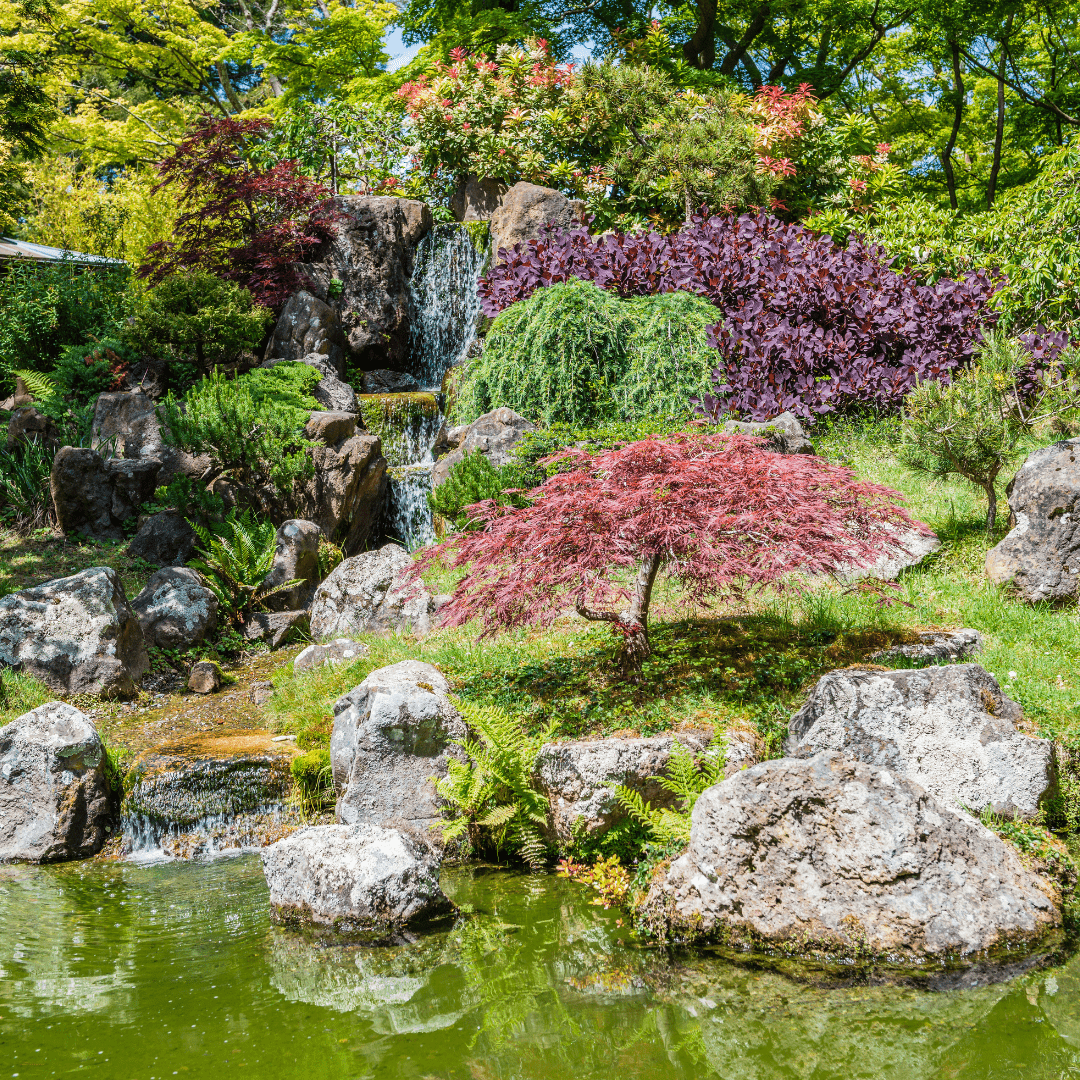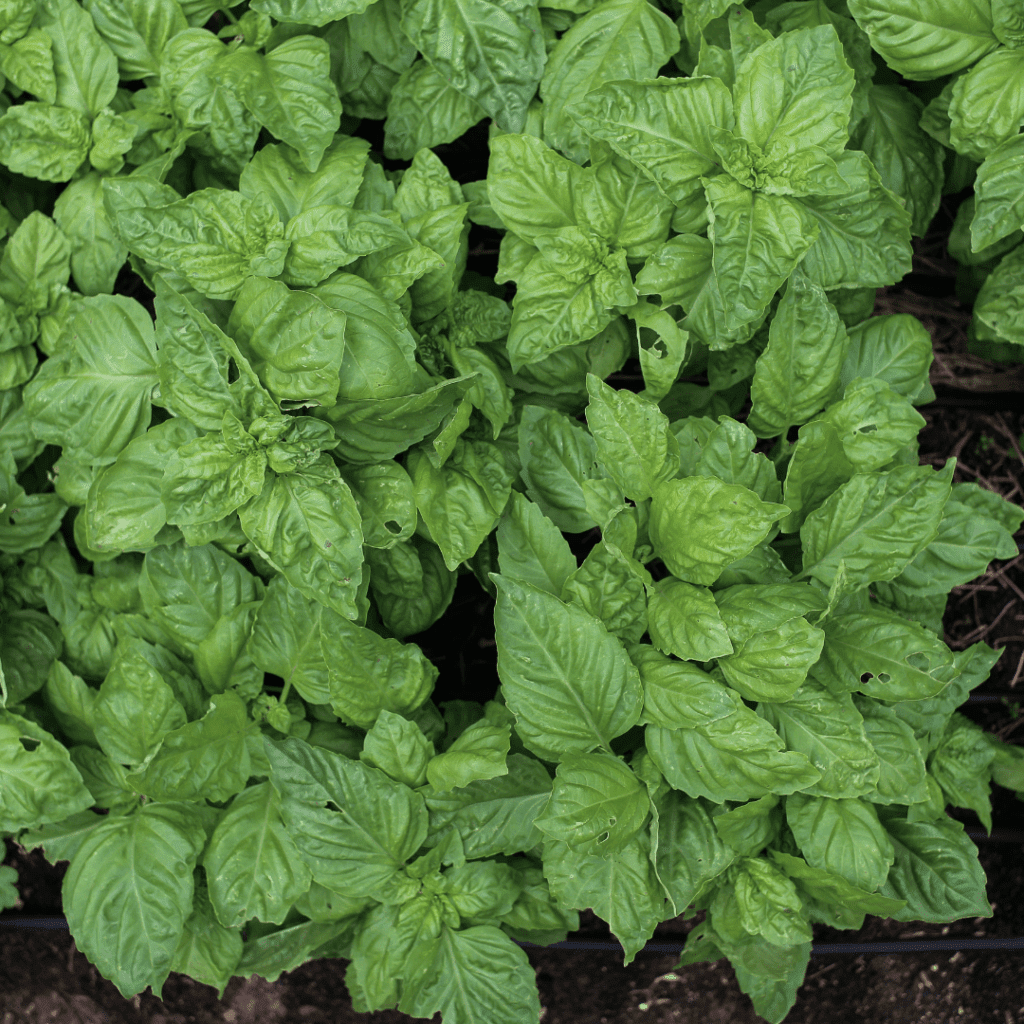Japanese tea garden.
Discover the enchanting world of Japanese tea gardens, where ancient tradition meets serene beauty. Steeped in history and influenced by Zen principles, these gardens offer a sanctuary for contemplation and connection with nature. In this guide, I will explore the #1 secret to cultivating a thriving Japanese tea garden, from design principles and plant selection to the art of tea ceremony through a spiritual meditative walk. Join me on a journey to unlock the spiritual essence and tranquility of these sacred spaces, and learn how to create your own oasis of peace and harmony right in your own backyard!
This is a pinnable post. Tap or hover over any image in this post to pin to your Pinterest Boards.
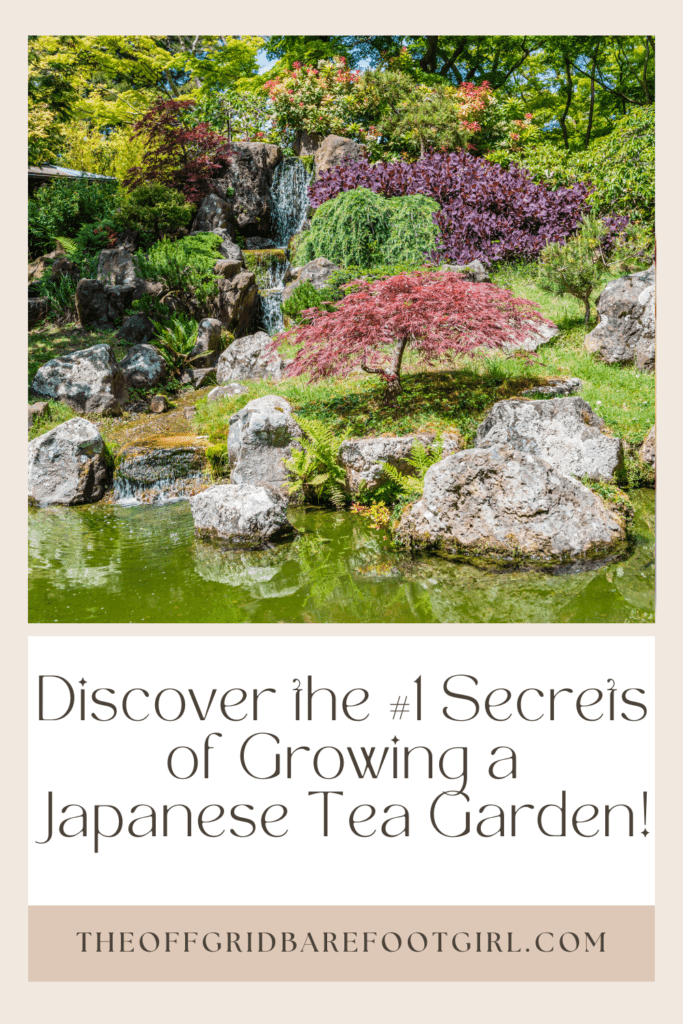
The History and Tradition of Japanese Tea Gardens
Origins of Japanese Tea Gardens
Dating back to the 9th century, Japanese tea gardens sprouted from the seeds of tea-drinking traditions brought over from China. As tea ceremonies bloomed, these serene havens blossomed alongside, shaping Japan’s cultural landscape. With meticulous design and careful cultivation, Japanese tea gardens became more than just landscapes. They became living reflections of Japanese artistry and spirituality.
Influences of Zen Buddhism
Zen Buddhism, a guiding force in Japanese culture, infused Japanese tea gardens with its principles. Through simplicity and harmony, Zen teachings shaped the design and philosophy of these tranquil spaces. Each element, from carefully placed rocks to winding pathways, reflects Zen’s emphasis on mindfulness and presence. As visitors stroll through these serene landscapes, they experience a profound connection to nature and the present moment. This created a cornerstone of Zen philosophy.
Design Principles and Elements of a Japanese Tea Garden
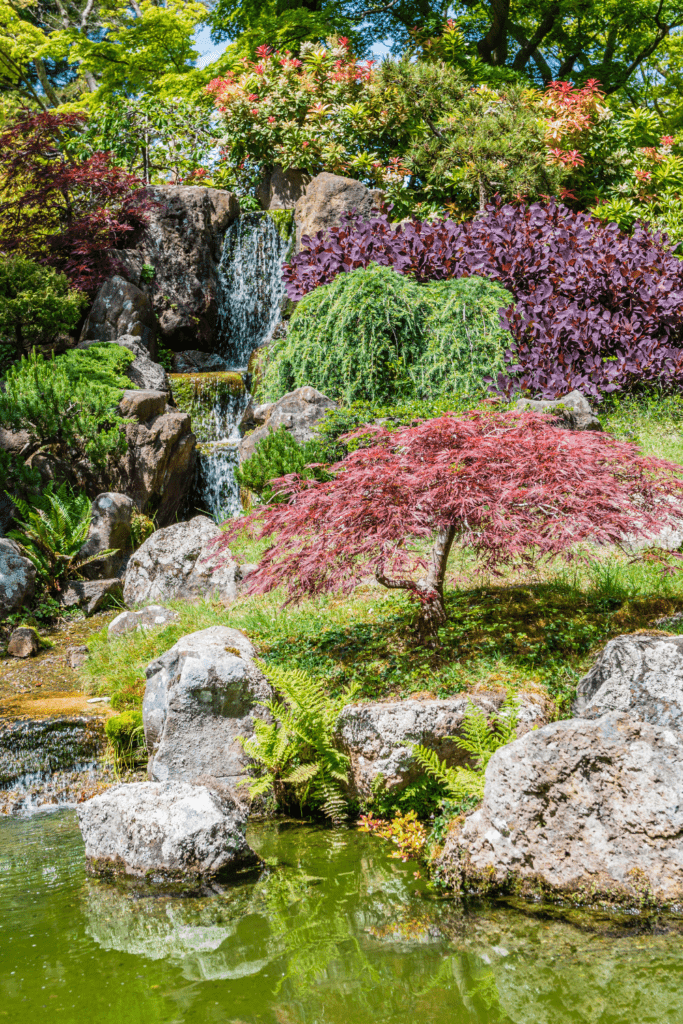
Become Inspired Through a Meditation Walk with Me!
Immerse yourself in the serene beauty of a Japanese tea garden as you embark on a meditation walk, enveloped by the sights and sounds of tranquility through your imagination. As you stroll along winding paths lined with meticulously trimmed hedges and vibrant foliage, feel the gentle crunch of gravel beneath your feet, grounding you in the present moment. Listen to the soothing melody of water flowing from ornate stone basins and cascading over smooth rocks, harmonizing with the chirping of birds perched in the surrounding trees.
Take in the exquisite arrangement of moss-covered lanterns and strategically placed stepping stones, inviting you to pause and reflect. With each breath, inhale the delicate fragrance of blooming cherry blossoms and aromatic tea leaves. Awakening your senses and clearing your mind. As you emerge from your meditation walk, inspired by the tranquility and balance of the Japanese tea garden, envision creating your own sanctuary of peace and serenity in your very own backyard.
Borrowed Landscape (Shakkei)
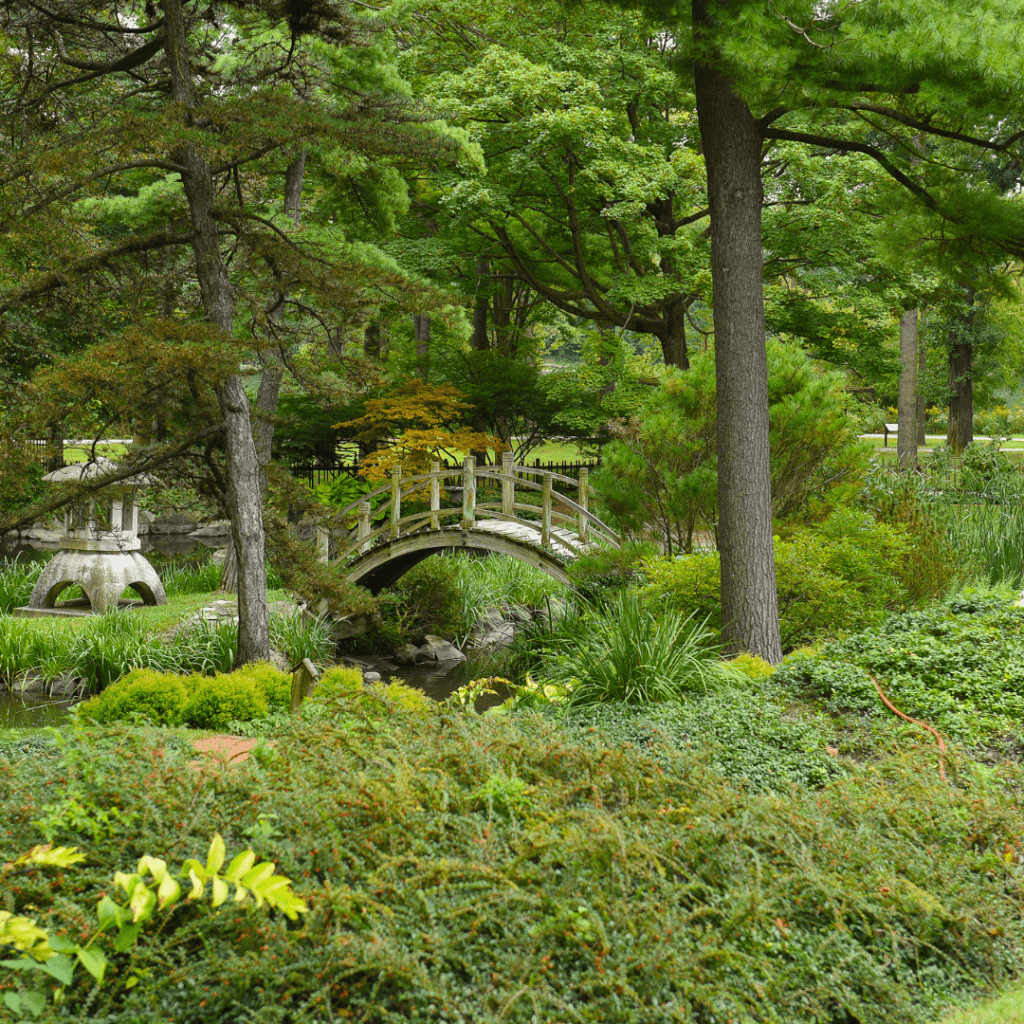
In your Japanese tea garden, immerse yourself in the art of borrowed landscape, known as Shakkei. A technique that seamlessly integrates the surrounding natural scenery into the garden’s design. With thoughtful placement of trees, hills, and distant vistas, the boundaries of the garden expand, blending seamlessly with the landscape beyond. Experience the tranquil dance between human-made elements. Experience the untouched beauty of nature, fostering a profound sense of harmony and equilibrium.
As you wander through the garden’s winding paths, embrace the ever-shifting panoramas that effortlessly meld with the garden’s innate splendor, enriching the profound sense of calm and peace that envelops you. Consider the melody of the landscape and imagine what you are capable of creating.
Use of Water Features
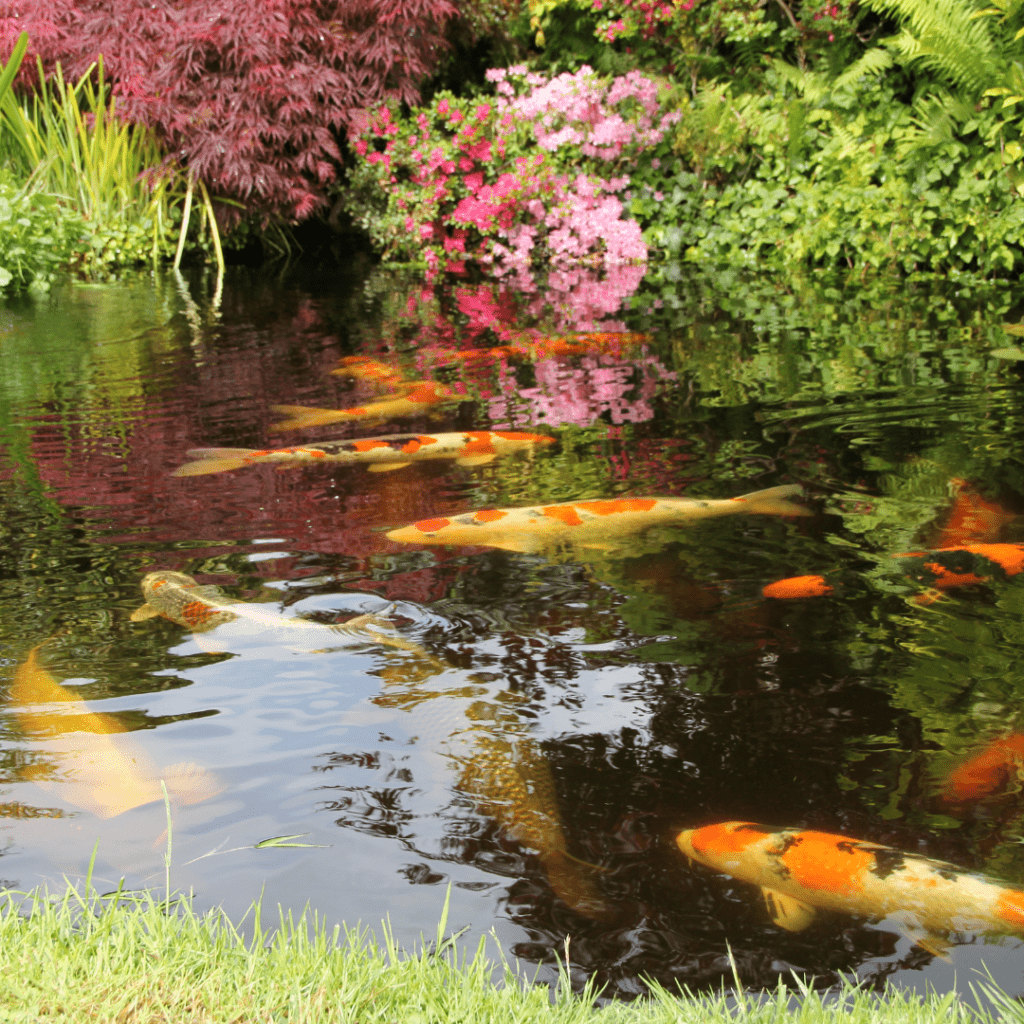
In Japanese tea gardens, water features hold a sacred presence, enchanting you with serene allure and melodic whispers. Streams, ponds, and cascades are thoughtfully woven into the terrain, inviting a harmonious dance with nature. The gentle trickle of water signifies the eternal flow of time, fostering an atmosphere of calm introspection. As you traverse winding pathways, you encounter gracefully arched bridges spanning murmuring streams. You grace stone lanterns casting their glow upon tranquil ponds, deepening the bond between soul and surroundings.
Contemplate enhancing your Japanese tea garden with a water feature to elevate its ambiance to sublime heights. Whether it’s a cascading waterfall or a serene pond, the gentle flow of water adds a tranquil essence to the surroundings. It fosters a profound sense of peace and tranquility. The melodic symphony of water trickling over rocks or softly splashing against the shore enhances the sensory journey, beckoning both you and your loved ones to embrace moments of relaxation and serenity. Moreover, a strategically positioned water feature acts as a captivating focal point, inspiring moments of deep contemplation and introspection.
Additionally, water features beckon wildlife, enriching the garden’s ecosystem and fostering a profound connection to nature. Contemplating the inclusion of such a feature can metamorphose a Japanese tea garden into a sanctuary teeming with peace and harmony. Take a moment to breathe in all of the bliss!
Incorporating Stone Elements (Ishidoro)
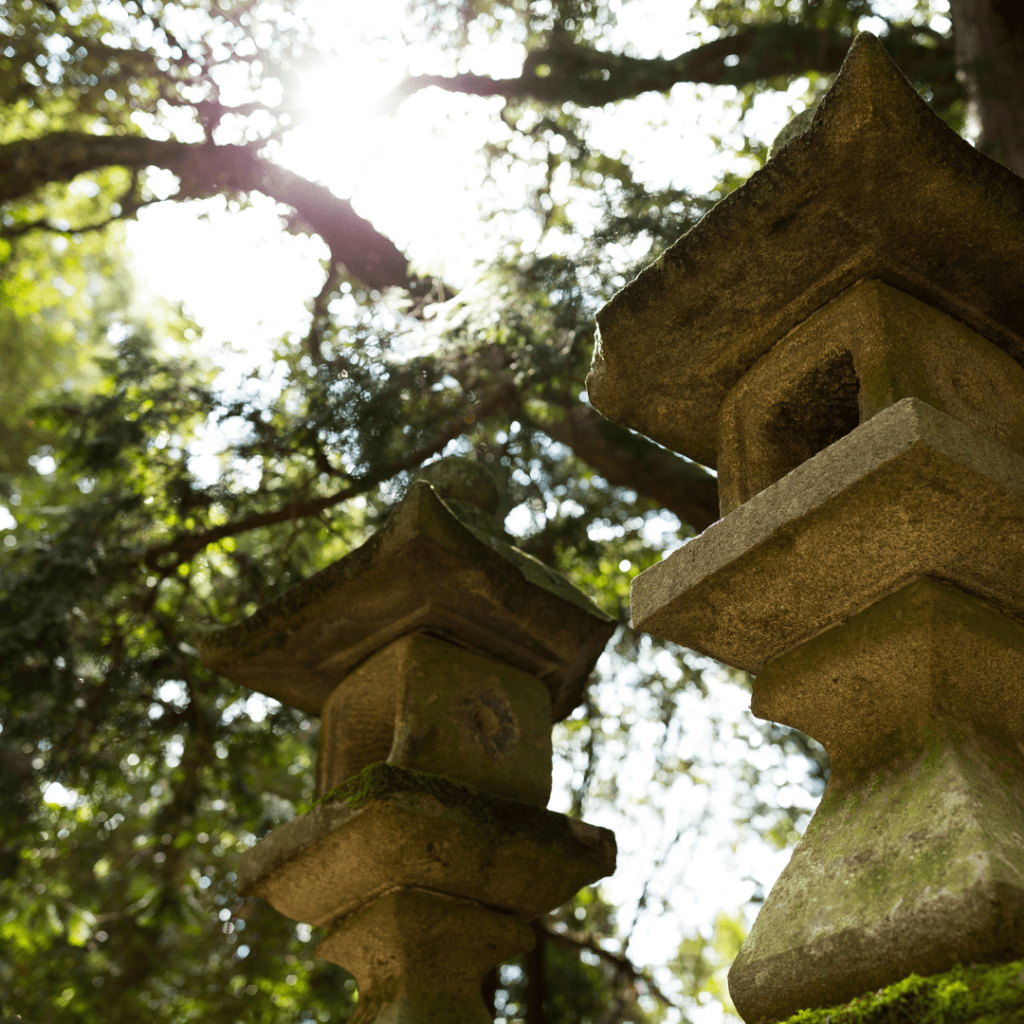
As you continue to walk through your Japanese tea garden, you envision stone elements or Ishidoro. Assuming a pivotal role in sculpting the landscape and fostering equilibrium and tranquility. Delicately positioned lanterns, pathways, and sculptures act as silent guides, inviting contemplation and introspection. Each stone is meticulously chosen for its distinct shape, texture, and symbolism. They imbue the garden with profound depth and personality, inspiring you with the possibilities you could add to your garden.
As twilight descends, lanterns gracefully illuminate the garden, bestowing upon it an enchanting aura. As you wander, you are greeted by stone bridges spanning gentle streams and pathways adorned with stepping stones. They are guiding you to a secluded tea nook nestled amidst verdant foliage. These serene settings beckon introspection and foster a profound connection with the natural world right in your own backyard dream.
Selecting the Perfect Plants for Your Tea Garden
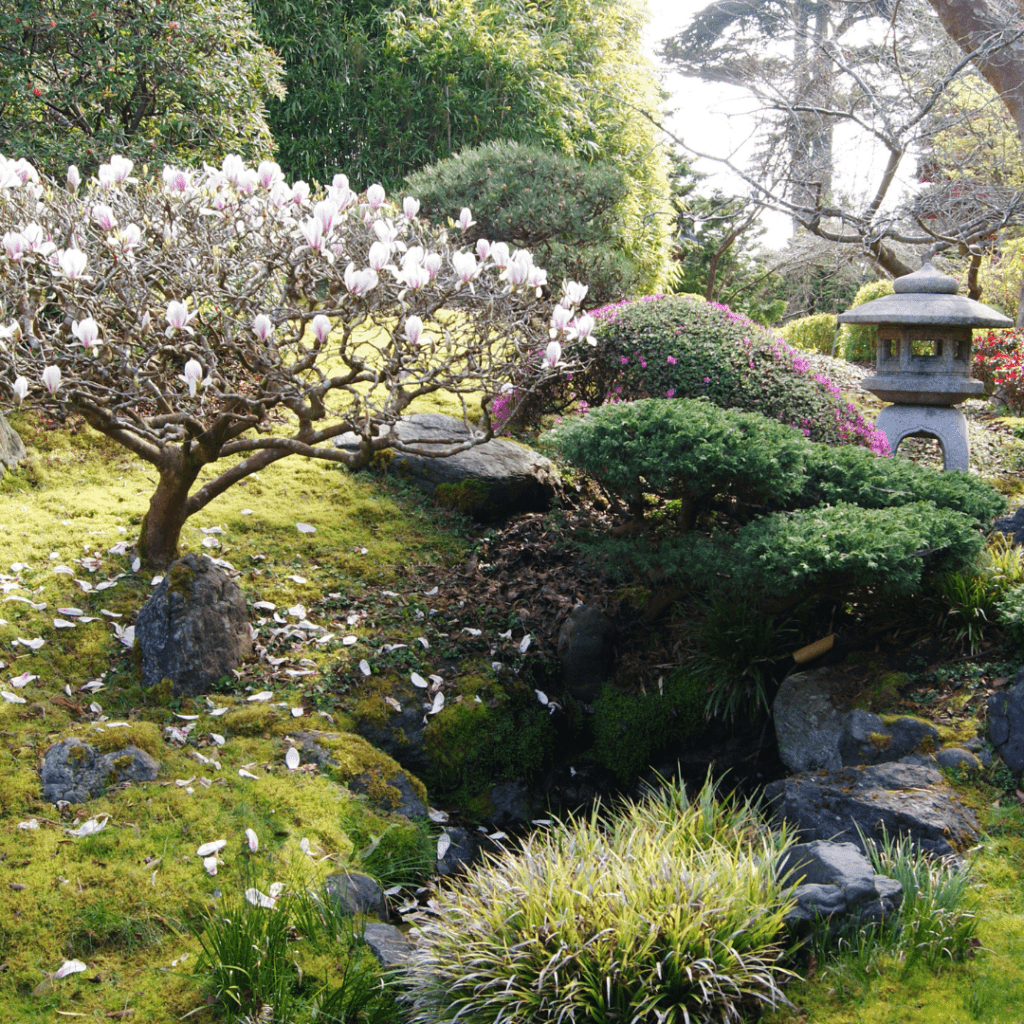
Japanese Tea Garden Plants
On your Japanese tea garden tour, you envelope Japanese plants that are carefully selected to evoke a sense of tranquility and harmony. Delicate cherry blossoms, symbolizing the fleeting beauty of life, paint the garden with hues of pink and white during springtime. Evergreen Japanese maples grace the landscape with their graceful branches, offering shade and a touch of elegance year-round.
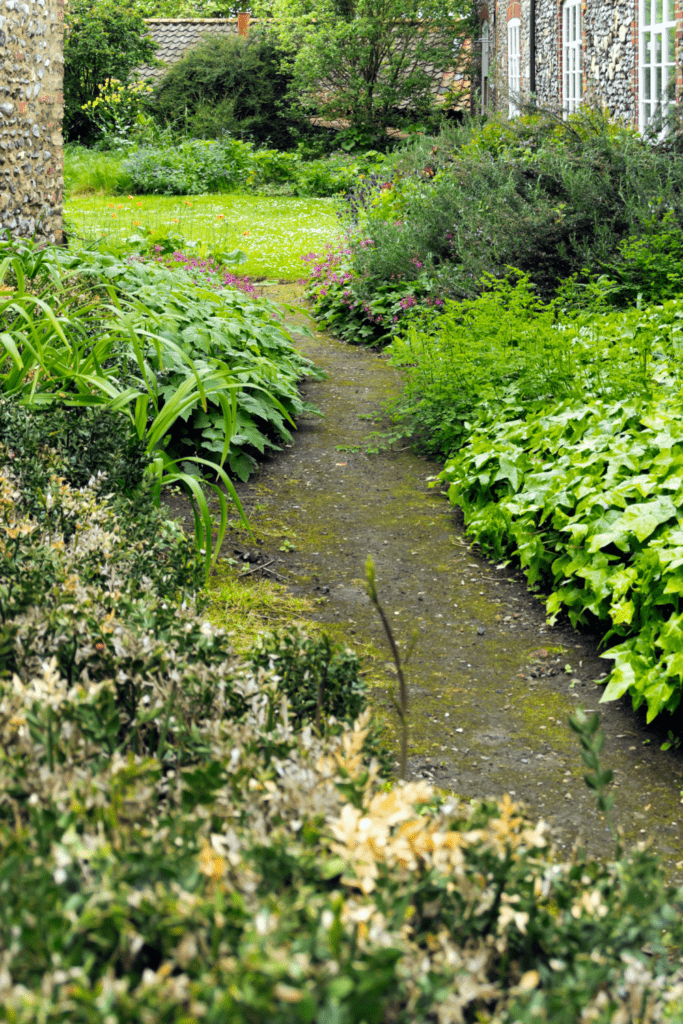
Moss-covered stones and ferns carpet the ground, creating lush, verdant pathways that lead to hidden corners of serenity. Bamboo, revered for its resilience and grace, rustles softly in the breeze. It is infusing the garden with a sense of movement and vitality. Each plant is chosen for its symbolism and aesthetic appeal. They contribute to the timeless beauty of the possibilities of your very own Japanese tea garden.
Symbolism of Plants in Tea Gardens
As you carelessly stroll through your Japanese tea garden, you take in the wonders of every plant that holds profound symbolism, enriching the spiritual experience of visitors. Cherry blossoms symbolize the transient nature of life, reminding us to cherish each moment. Japanese maples represent balance and harmony, their evergreen foliage offering solace in all seasons. Moss-covered stones signify resilience and endurance, while ferns embody tranquility and renewal. Bamboo embodies strength and flexibility, bending gracefully with the wind. Each plant, carefully chosen for its meaning, contributes to the garden’s spiritual journey, inviting contemplation and reflection amidst nature’s beauty.
Contemplating the exquisite beauty of these chosen plants, you envision the serene ambiance they would evoke when nestled in your very own Japanese tea garden.
Cultivating Zen: Creating a Relaxing Atmosphere
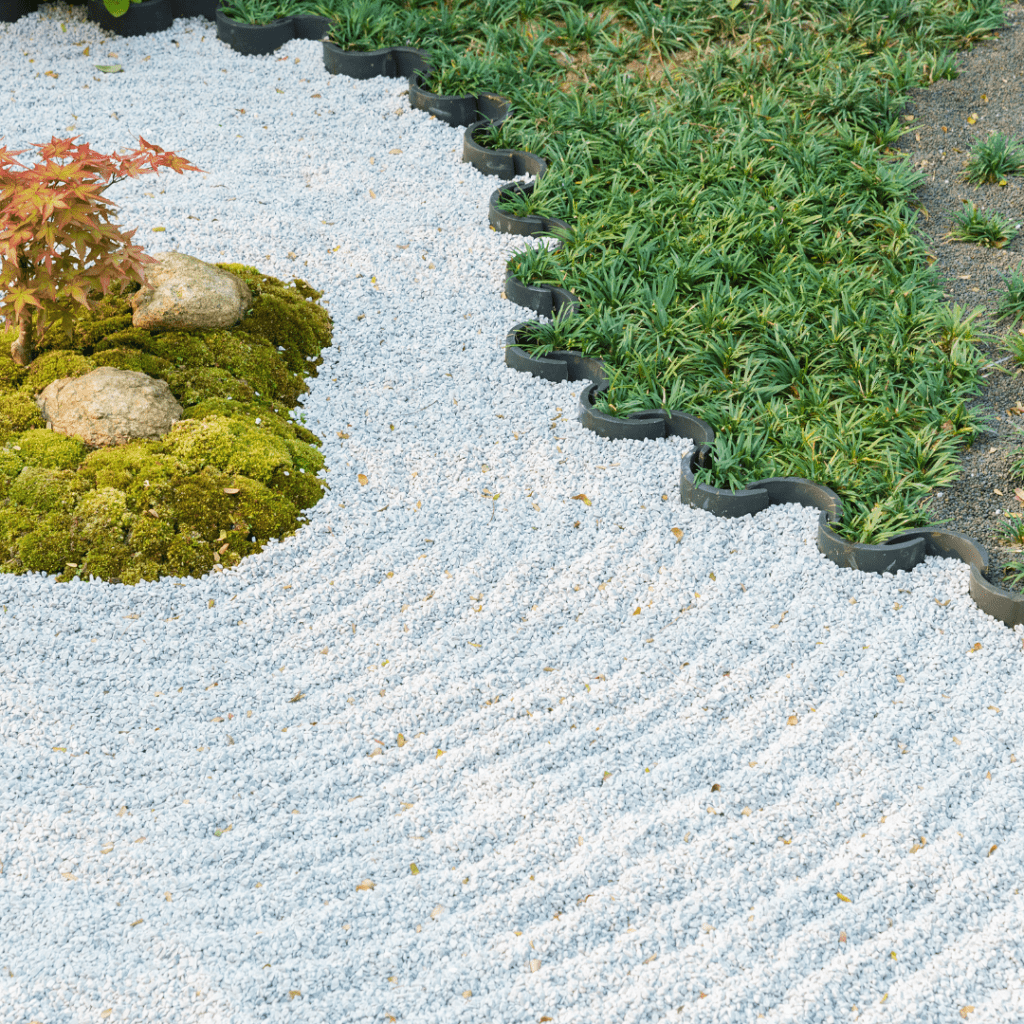
Mindful Plant Placement
As you stroll through the Japanese tea garden, each step is a dance of mindfulness. They are guiding you to the perfect placement for every plant. With each plant carefully chosen, you sense a deeper connection to nature and the garden’s serene energy it offers. Each moment of contemplation brings clarity, as you harmonize with the rhythm of the earth and the whispers of the wind.
Creating Tranquil Pathways (Roji)
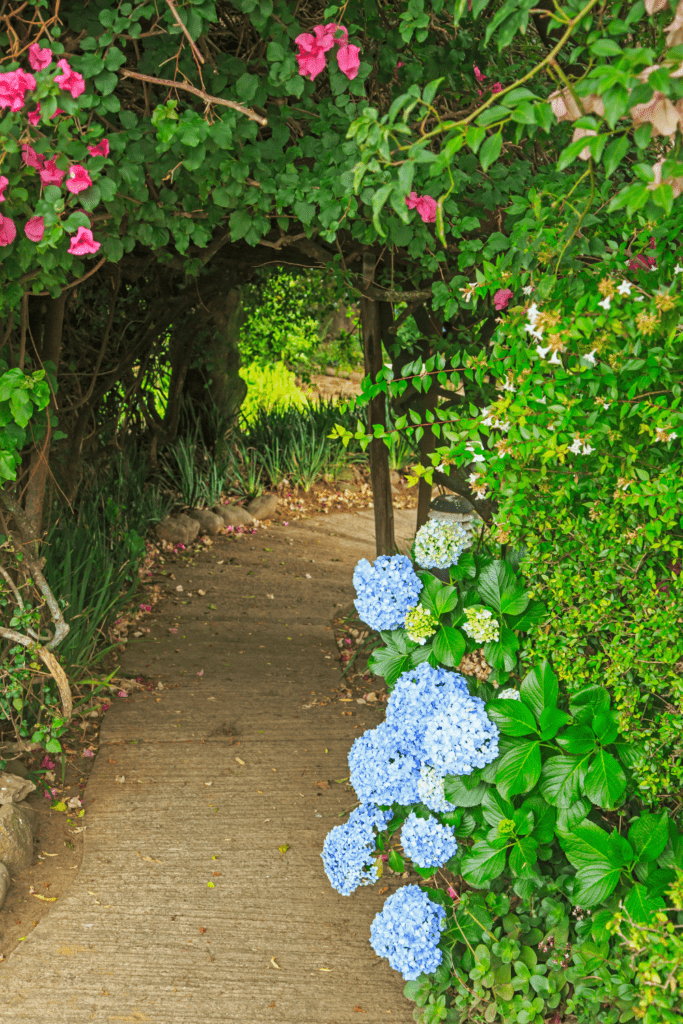
With every step along the tranquil pathways of the Japanese tea garden, a sense of peace washes over you. The carefully crafted paths guide your journey, leading you through a landscape of serene beauty and contemplation. Each curve and turn invites a moment of reflection, allowing you to connect with nature and find harmony within yourself. As you walk, the gentle rustle of leaves and the fragrance of blossoms fill the air. It is soothing your senses and calming your mind. This is so inspiring to you as you imagine how you will craft your pathways throughout your dream garden.
The Art of Tea Ceremony in Your Garden
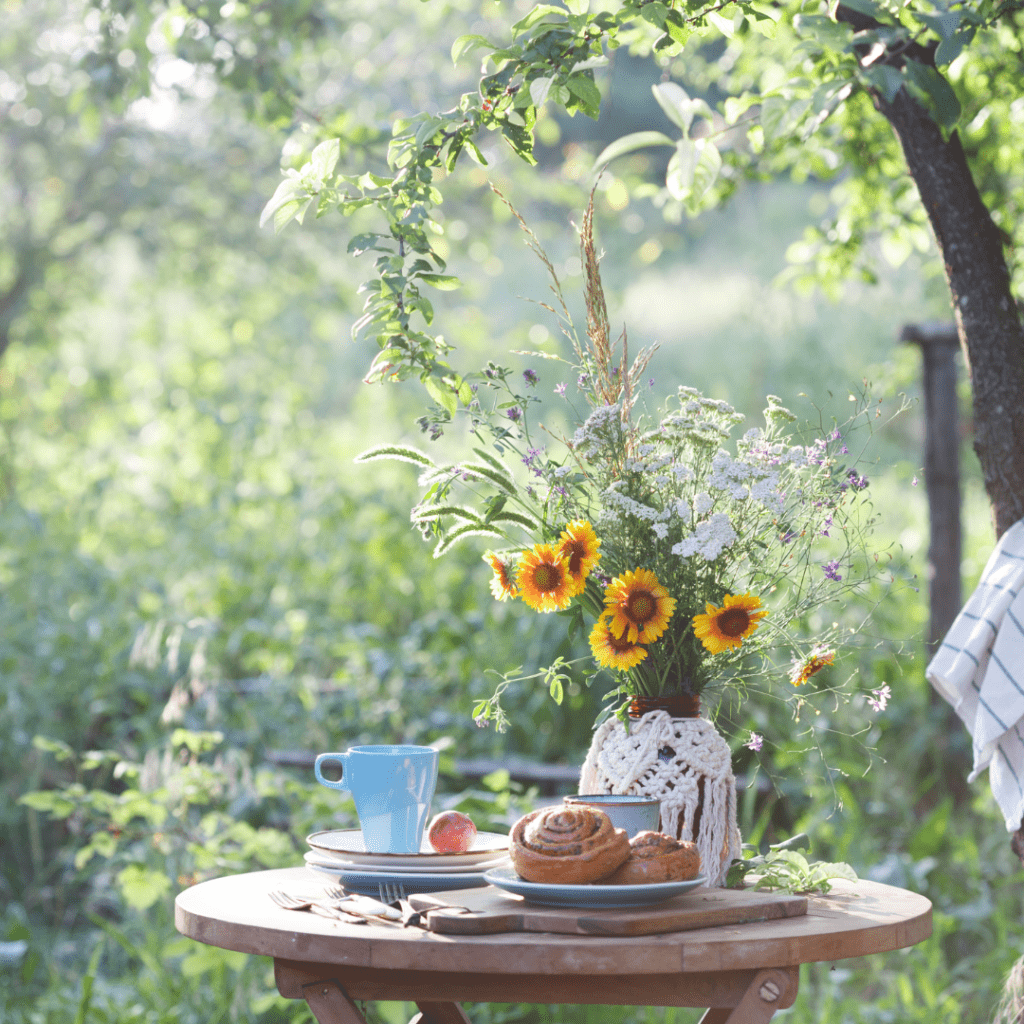
As you step into the sacred realm of the Japanese tea ceremony, you aimlessly wander through your tranquil garden. You imaginatively take in how each element is carefully arranged to honor tradition and invite contemplation. The path leads you to a tea nook, a sanctuary of simplicity and elegance. With each movement, you engage in a ritual of mindfulness, from the precise pouring of water to the graceful whisking of matcha.
Surrounded by nature’s beauty, you sip the fragrant brew, allowing its warmth to envelop your senses and quiet your mind. In this moment, you find harmony and connection, embracing the timeless art of tea. You are at peace with yourself, inspired and knowing exactly how you will create your serene garden.
Tea Nook Design and Function
Stroll along the winding paths of your Japanese tea garden, and discover tucked-away, a peaceful tea nook designed for tranquility and reflection. A nook that beckons with its minimalist beauty, blending seamlessly into the natural landscape. You sit upon the smooth wooden benches, crafted with precision and care, and feel the gentle embrace of the surroundings.
Here, amidst the rustling leaves and whispering breeze, you find solace and stillness. The design of the nook is not just aesthetic but functional, providing a serene space for contemplation and the ritual of tea.
Rituals and Etiquette
As you stand up to wander through the Japanese tea garden, observe the rituals and etiquette that govern this sacred space. Pause at the stone basin to purify your hands before entering the tea nook, a gesture of respect and reverence to the surrounding energies. Feel the smooth texture of the wooden door as you slide it open, entering a realm of tranquility and tradition. Inside, bow to the host of energies and fellow naturistic elements before taking your seat, honoring the spirit of harmony and unity.
Listen to the rhythmic sound of water boiling in the kettle, a soothing melody that marks the beginning of the tea ceremony. With each graceful movement, you prepare the tea with mindfulness and precision, embodying the essence of hospitality and grace to serve yourself a delicious cup of aromatic tea.
Maintenance Tips for a Thriving Tea Garden
As you get up from the comfort of the tea nook and begin to stroll through your Japanese tea garden with mindful steps, attending to its care and vitality. As you begin to care for the garden, you gently prune overgrown branches and trim unruly foliage, allowing the natural beauty to shine through. You clear away fallen leaves and debris, keeping the pathways clean and inviting for your next visit.
As you stop to take a moment, you begin to inspect the water features, ensuring they flow smoothly and remain free of debris. You then begin to tenderly tend to the moss and plants, nurturing them with water and gentle care.
As you walk down the winding path, you embrace the meditative practice of raking gravel patterns, creating serene patterns that soothe the soul. Finally, you take the time to sit and reflect, absorbing the tranquility of your garden sanctuary and finding peace in its ever-changing beauty.
Seasonal Care and Pruning
As you continue to walk through your Japanese tea garden, you observe the moss and ground cover with a mindful eye. Embracing the art of moss management, you gently tend to its lush greenery. You carefully remove any debris or fallen leaves that may hinder its growth, allowing the moss to thrive in its tranquil environment. Encouraging the spread of moss by lightly misting it with water, you provide the moisture it needs to flourish.
Take care not to disturb the delicate balance of the ecosystem, respecting the natural rhythm of growth and decay. With each step, immerse yourself in the beauty of the moss-covered pathways, finding solace in their serene presence.
Managing Moss and Ground Cover
As you wander through your Japanese tea garden, attune your senses to the subtle whispers of nature. Gently nurture the moss and ground cover, fostering a harmonious balance between growth and tranquility. Remove any debris or fallen leaves with care, allowing the verdant carpet to thrive under your gentle touch.
Embrace the art of moss management, guiding its delicate tendrils along the path of serenity. With each mindful step, cultivate a sanctuary where moss and ground cover coalesce, weaving a tapestry of natural beauty beneath your feet!
Enhancing Your Tea Garden with Traditional Features
Step into the serene sanctuary of your Japanese tea garden and let the ancient traditions guide your journey. Engage your senses as you behold the timeless beauty of traditional features meticulously placed to harmonize with nature. Allow the tranquil melody of flowing water to wash over you, echoing the rhythm of life itself. Follow winding pathways adorned with stone lanterns, each one a beacon of inner peace and illumination.
Pause by the koi pond, where graceful fish glide beneath the surface, embodying the essence of grace and tranquility. Embrace the meditative stillness of the tea nook, its simple elegance inviting reflection and contemplation. With each mindful breath, infuse your garden with the spirit of tradition, creating a sacred space where ancient wisdom and modern serenity unite right in your own backyard!
Tea Lanterns (Toro)
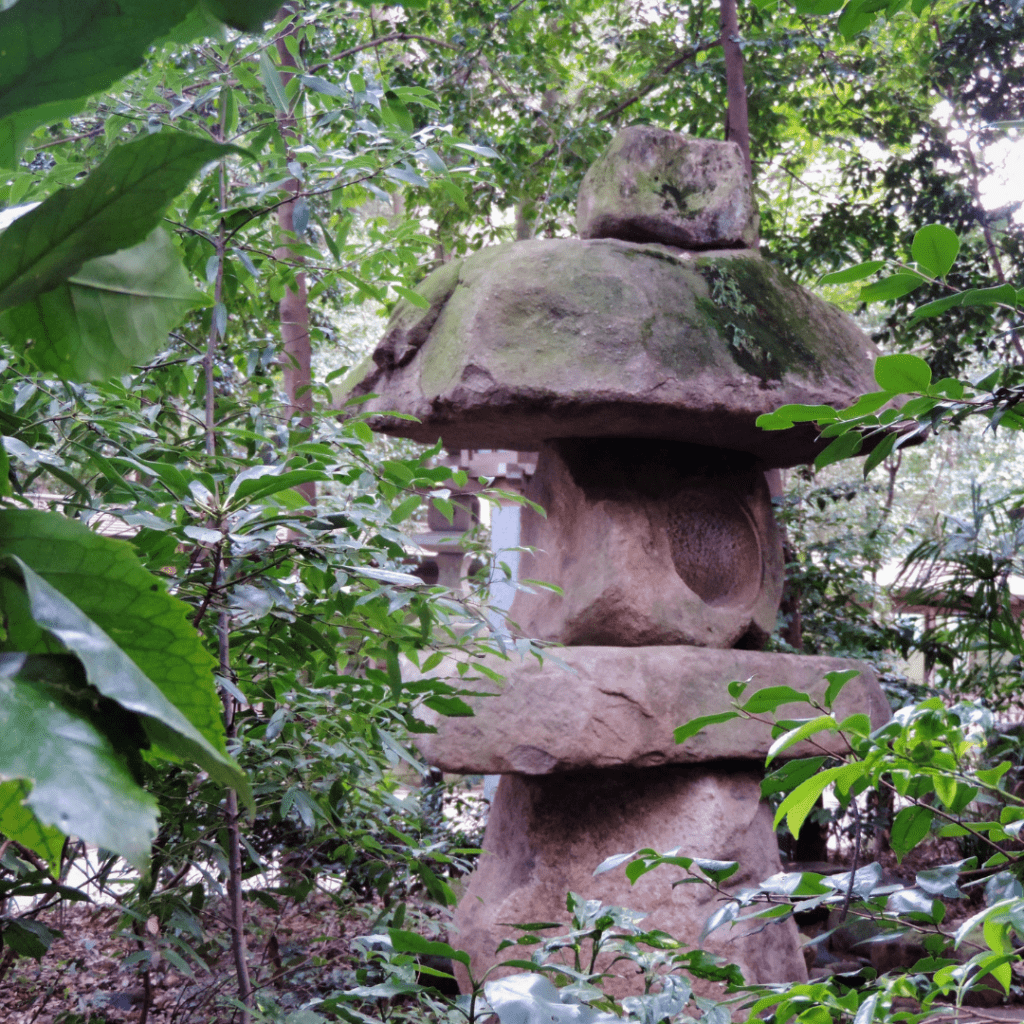
As you continue back from your journey through the ethereal glow of tea lanterns in your Japanese tea garden, you are inspired by the beauty. Let the soft flicker of light guide your steps along winding pathways, casting enchanting shadows that dance with the whispers of the night. Feel the gentle embrace of tranquility as you bask in the warm radiance emanating from these timeless fixtures.
Each lantern, with its weathered stone and timeless design, tells a story of ancient wisdom and enduring grace. With each luminous step, immerse yourself in the sacred ambiance of your garden, where the boundaries between earth and sky blur into a tapestry of serenity. You have totally forgotten you are safe right in your own backyard.
Water Basins (Tsukubai)
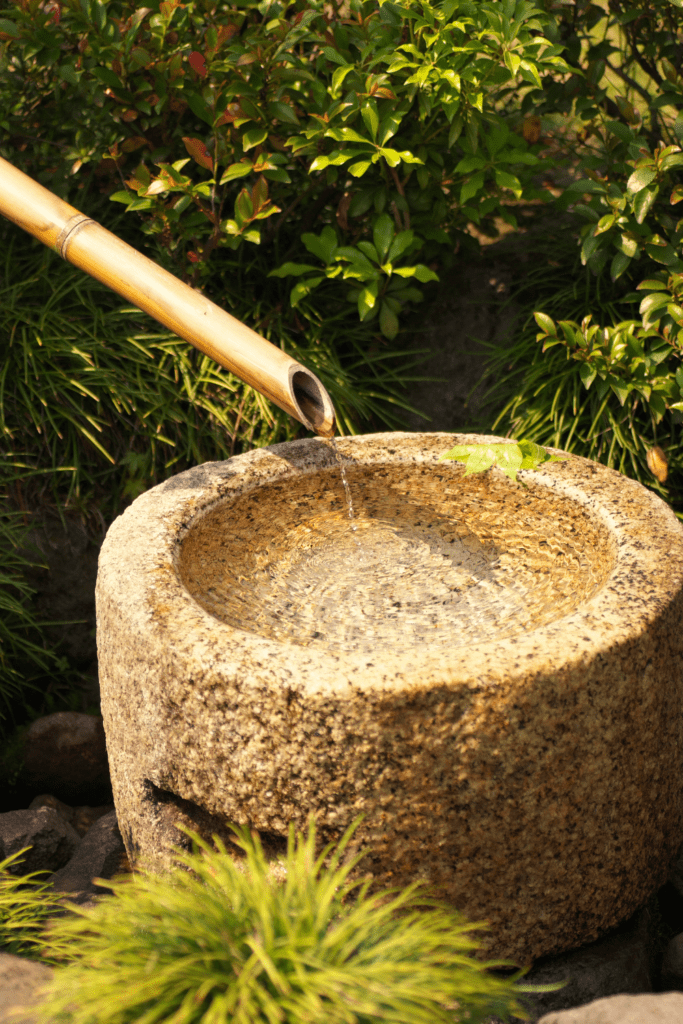
As you leave the luminous path, you embark on a serene journey through the water basins of your Japanese tea garden. Listen to the gentle trickle of water as it cascades from one basin to the next, creating a harmonious symphony that resonates with your soul.
Feel the cool, soothing touch of water against your skin as you trace your fingers along the smooth stone edges. Allow the rhythmic flow of water to wash away your worries and transport you to a state of peaceful mindfulness. With each step, let the tranquil beauty of the water basins rejuvenate your spirit and nourish your senses, creating a sanctuary of serenity right in your own backyard.
Unlocking the Spiritual Benefits of a Japanese Tea Garden

As you continue to stroll through your Japanese tea garden, immerse yourself in its tranquil beauty and unlock its spiritual benefits. Feel the earth beneath your feet grounding you, connecting you to the present moment. Listen to the soothing sounds of nature – the gentle rustle of leaves, the melodious chirping of birds.
Breathe deeply, inhaling the crisp, clean air, and exhale any tension or stress. Let go of distractions and worries, allowing yourself to be fully present in this sacred space. With each mindful step, feel a sense of peace and harmony wash over you, nourishing your body, mind, and soul from the very safe haven you created for yourself.
Meditative Practices in the Garden
Slow down your pace and embrace the meditative practices to deepen your connection with nature and cultivate inner peace. Take slow, deliberate steps, feeling the earth beneath your feet grounding you. Notice the intricate details of each plant and stone, observing their textures, shapes, and colors. Listen to the gentle rustle of leaves and the melodious songs of birds, allowing their harmonious rhythms to soothe your mind.
Breathe deeply, inhaling the fragrant scents of flowers and foliage, and exhale any tension or stress with each breath. Engage your senses fully, savoring the sights, sounds, and smells that surround you. With each mindful moment, feel a profound sense of serenity and calm wash over you, nurturing your spirit and restoring balance to your inner being.
Fostering Inner Peace and Harmony
Strolling through the serene pathways of your Japanese tea garden, immerse yourself in the tranquility that surrounds you. Feel the gentle breeze caress your skin and hear the soothing whispers of the wind through the leaves. Take in the vibrant hues of the meticulously arranged plants, each one contributing to the garden’s harmonious tapestry.
As you pause by the tranquil water basins, allow their reflective surfaces to mirror the calmness within your soul. With each step, let go of worries and distractions, embracing the present moment with mindfulness and grace. In this sanctuary of nature, find solace and rejuvenation, nurturing inner peace and harmony with every breath from the very serenity garden you just vividly created.
Conclusion
As you conclude your meditative stroll through your Japanese tea garden, carry with you the tranquility and serenity you’ve discovered. Let the peaceful energy of the garden linger in your heart, guiding you through the challenges and joys of life. With each step, remember to cultivate mindfulness and gratitude, embracing the beauty of the present moment. Allow the lessons learned in this sacred space to resonate within you, fostering inner peace and harmony in your daily life. As you depart, carry the spirit of the Japanese tea garden with you, a sanctuary of calmness and inspiration whenever you need it most, until the day you create it in your reality!
Resources: Gain the feel and experience of a Japanese tea garden to acquire inspiration!
- Japanese Tea Garden – San Francisco
- Japanese Tea Garden – Gardens of Golden Gate Park
- Japanese Tea Garden – San Antonio
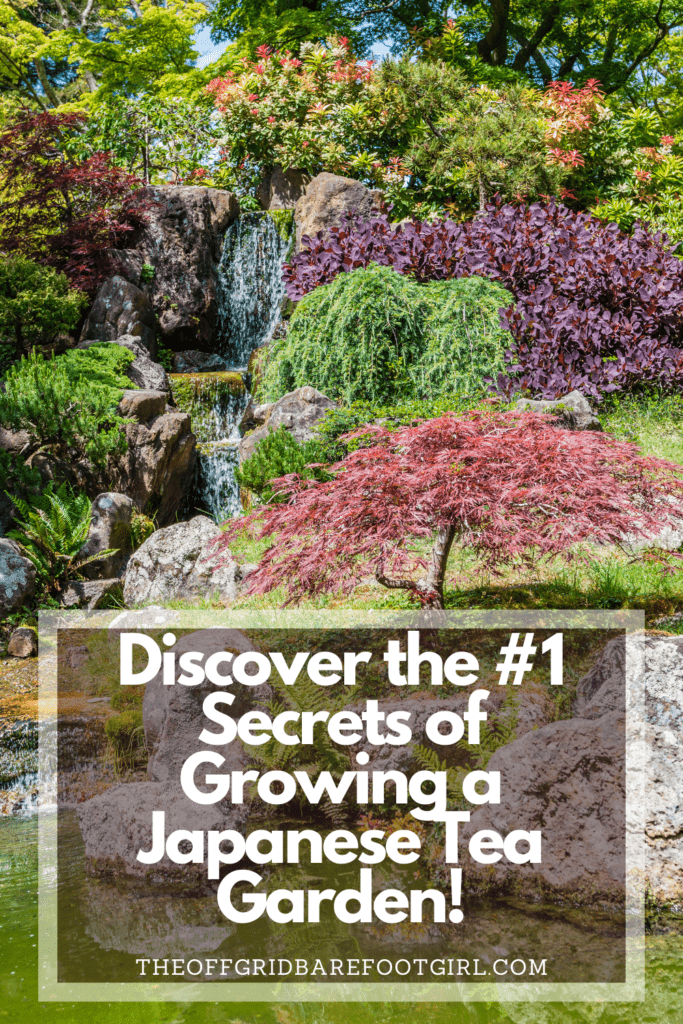
Frequently Asked Questions
1. Can I create a Japanese tea garden in a small space?
Absolutely! Creating a Japanese tea garden in a small space is definitely possible. The key to success is incorporating elements that are essential to traditional Japanese gardens, such as simplicity and tranquility. Start by selecting plants like cherry blossom trees, bamboo, and Japanese maples that are suitable for confined areas. Opt for minimalistic hardscaping with gravel paths, stone arrangements, and a small water feature like a bamboo fountain or mini pond. Make sure to leave ample open space for meditation or tea ceremonies. Add lanterns, pagodas, and other decorative items sparingly to maintain a peaceful atmosphere.
2. What are some common plants used in Japanese tea gardens?
Japanese tea gardens, known for their tranquil and serene beauty, often feature several common plants that are carefully chosen to enhance the overall aesthetic. Some of these plants include cherry blossom trees (sakura), Japanese maple trees (momiji), bamboo, camellia bushes, and pine trees. Cherry blossom trees are particularly symbolic in Japanese culture, representing the fleeting nature of life. Japanese maple trees add vibrant color to the garden with their stunning foliage, while bamboo is prized for its versatility and strength. Camellias are valued for their elegant blooms and fragrance, creating a soothing atmosphere in the garden. Pines are also commonly found in Japanese tea gardens as they symbolize longevity and resiliency.
3. Do I need to practice a tea ceremony to enjoy a Japanese tea garden?
No, you don’t need to practice a tea ceremony in order to enjoy a Japanese tea garden. While participating in a traditional tea ceremony can definitely enhance your understanding and appreciation of the art of tea, simply strolling through a Japanese tea garden can be a peaceful and satisfying experience on its own. These gardens are designed to evoke feelings of tranquility and harmony with nature, featuring carefully manicured landscapes, serene water features, and beautiful architectural elements.
4. How can I incorporate modern elements into a traditional Japanese tea garden design?
Incorporating modern elements into a traditional Japanese tea garden design can be an exciting and innovative way to blend the old with the new. One way to achieve this is by adding contemporary architectural features such as sleek wooden benches or minimalist stone sculptures. You could also incorporate modern materials like metal or glass in the design of water features or pathways. Another option is to introduce new plant species or hybrid varieties that complement the overall aesthetic while introducing fresh colors and textures. By carefully selecting and integrating these modern elements, you can create a harmonious balance that pays homage to tradition while infusing your tea garden with a touch of contemporary flair.
Summary
I hope I have inspired you to improve your health with herbal medicine under the guidance of your physician and begin to reap the benefits of what medicinal herbs offer.
If you were encouraged by this post, I invite you to check out my FREE Printables Page for fun free printables, planners, and charts.
ENTER MY FREE Printables Page HERE
Here are some more of my gardening inspiration posts to check out!
Thyme: Powerful Health Benefits of Thyme
Lavender: Powerful Health Benefits of Lavender
Chamomile: Powerful Health Benefits of Chamomile
Sage: Powerful Health Benefits of Sage and Its Effects
Garlic: Powerful Health Benefits of Garlic and Its Effects
Holy Basil: Powerful Health Benefits of Holy Basil and Its Effects
16 Best Medicinal Herbs to Grow in Your Garden Now
8 Best Natural Pain Relievers For Survival Without Pharmaceuticals
Blessings,
The Off Grid Barefoot Girl

